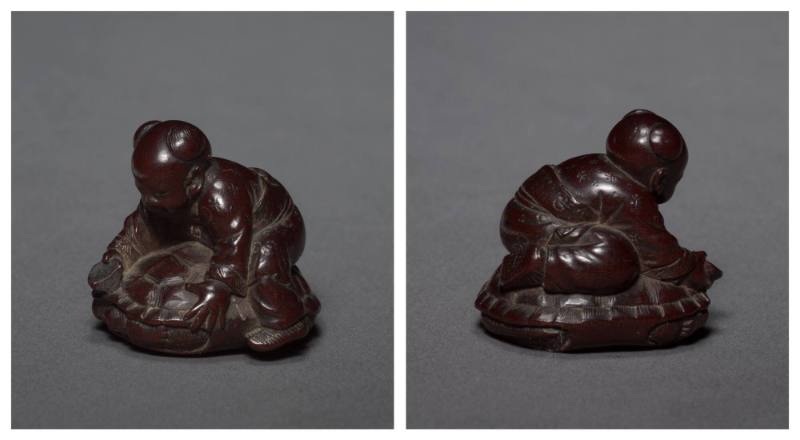
Object Details
Culture
Afikpo (Nigeria)
Medium
Calabash, raffia and other fibers, wood, and pigment
Dimensions
23 x 12 inches (58.4 x 30.5 cm)
Credit Line
Gift of Mr. and Mrs. William W. Brill
Object
Number
92.005.012
BRIEF DESCRIPTIONWorn by a young male initiate, the mbubu functions as a training mask, and is dance(…)
BRIEF DESCRIPTIONWorn by a young male initiate, the mbubu functions as a training mask, and is danced by boys during a masquerade that is part of their initiation process.WHERE WAS IT MADE?The Afikpo live in the southeastern part of Nigeria.HOW WAS IT MADE?A trained carver made this initiation mask. After carving the calabash (a type of gourd) with a vertical and several horizontal lines, the artist attached raffia backing and the fiber-covered wood extension to the calabash base. Many other mbubu contain an additional feature – the neck of the calabash projects forward and away from the “face.” The carver completes the mask with the application of paint.On this mask, the artist employed four traditional colors: black, white, red, and yellow. These colors are usually found locally. Chalk is used as a white pigment, yellow traditionally comes from the bark of a local okwogho tree, and red is made from camwood pulp. Artists produce black in several ways; they may sear the surface or even apply shoe polish.HOW WAS IT USED?The mbubu functions as a training mask. This abstract mask is danced by boys and differs markedly from the more realistic masks worn by Afikpo men. The initiation of eldest sons in an Afikpo village calls for a masquerade employing mbubu or calabash masks. This initiation, appropriately called isiji (head-yam), begins after the New Yam Festival in September. During the first month of the initiation period, sons undergo a series of arduous tasks, refrain from certain taboos such as showing one’s teeth, and emerge from the bush wearing their calabash mask. The following day, they perform a public masquerade and repeat it over several days. During the performances, the dancers do not face women or non-initiates.WHY DOES IT LOOK LIKE THIS?Notice the cut lines on the “face” of the mask. These are not intended to be abstracted facial features, nor do the colors have particular significance. In addition to the mbubu, the initiate wears a light-yellow raffia dress that covers his whole body. Experienced friends assist the initiate by helping him assemble the costume from freshly gathered raffia leaves.












